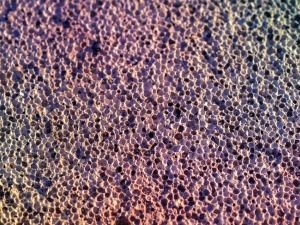Photopolymerizable gelatin and hyaluronic acid for stereolithographic 3D bioprinting of tissue‐engineered cartilage
Abstract
To create artificial cartilage in vitro, mimicking the function of native extracellular matrix (ECM) and morphological cartilage‐like shape is essential. The interplay of cell patterning and matrix concentration has high impact on the phenotype and viability of the printed cells. To advance the capabilities of cartilage bioprinting, we investigated different ECMs to create an in vitro chondrocyte niche. Therefore, we used methacrylated gelatin (GelMA) and methacrylated hyaluronic acid (HAMA) in a stereolithographic bioprinting approach. Both materials have been shown to support cartilage ECM formation and recovery of chondrocyte phenotype. We used these materials as bioinks to create cartilage models with varying chondrocyte densities. The models maintained shape, viability, and homogenous cell distribution over 14 days in culture. Chondrogenic differentiation was demonstrated by cartilage‐typical proteoglycan and type II collagen deposition and gene expression (COL2A1, ACAN) after 14 days of culture. The differentiation pattern was influenced by cell density. A high cell density print (25 × 106 cells/mL) led to enhanced cartilage‐typical zonal segmentation compared to cultures with lower cell density (5 × 106 cells/mL). Compared to HAMA, GelMA resulted in a higher expression of COL1A1, typical for a more premature chondrocyte phenotype. Both bioinks are feasible for printing in vitro cartilage with varying differentiation patterns and ECM organization depending on starting cell density and chosen bioink. The presented technique could find application in the creation of cartilage models and in the treatment of articular cartilage defects using autologous material and adjusting the bioprinted constructs size and shape to the patient.
Read the full Open Access article here:
Journal of Biomedical Materials Research Part B: Applied Biomaterials
Source: Preview Image: Pixel Embargo/Shutterstock



